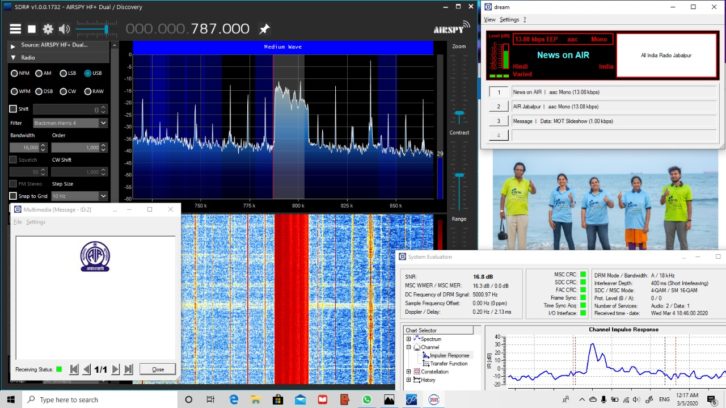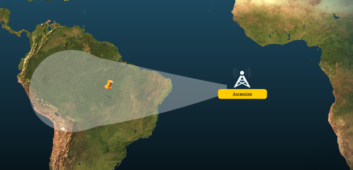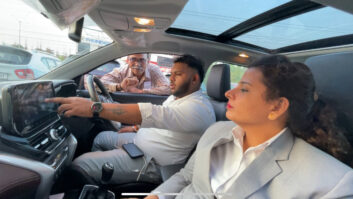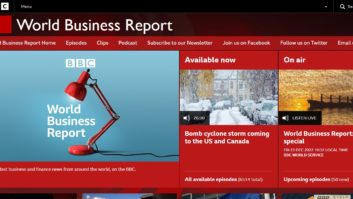The author is chairman of Digital Radio Mondiale.
Analog shortwave will celebrate about 100 years of existence in 2028 when many hope 5G will have been properly defined, tested and applied, though broadcasting is low on its long list of perceived advantages.

It’s true that shortwave was typically a medium of the Cold War that peaked in 1989 and that afterward its listenership dwindled. Many international broadcasters gave up on it as the post-war transmitters got rustier and the energy bills kept mounting.
After all, when budget cuts are needed, no transmitter will go on strike or write to the press, as happened when the BBC World Service tried to unsuccessfully close its Hindi shortwave transmissions in 2011. In 2020 these broadcasts stopped, when committed BBC Indian listeners, writers and thinkers who opposed it in 2011 did not protest too much.
The slow death of shortwave has been blamed on the internet and satellite. As technology and content are inextricably linked, shortwave created its type of content that is no longer favored by the savvy FM listener, internet user and cellphone obsessed.
WHAT HAPPENED?
First, came the great partnership of international broadcasters with local FM stations. International programs could be suddenly heard in big cities in very good sound quality. The drawback was that the programs were often very short, often scheduled at unreasonable hours.
“Radio should address each and every one in cities and far away rural communities, whether to inform, entertain or alert to emergency situations.”
Branding was also an issue for the big international broadcasters now piggybacking on a local station with its own identity. There was also the danger that the local station could object to this partnership for political or content reasons and drop the international program at very short notice.
In some European cities, international broadcasters have also become local ones as they have gone on DAB multiplexes, more of a prestige move than an audience growing measure.

Most of these international broadcasters are streaming and throwing their lot with another 30,000 or more stations that listeners have to choose from but only if they have electricity, a laptop, an internet connection and sometimes the patience to cope with buffering.
So, shortwave and its long-range advantage were replaced mainly by the one-to-one sophisticated internet and the cheaper, clearer but very local FM or the DAB+ option in band III, in this way undermining the very essence of their wide coverage and appeal.
At first, it might seem that these are cheaper and more modern options. But, in reality, energy-hungry FM and the multiplexed DAB+ are not that cheap either. Streaming uses an expensive digital electronics setup for something that broadcasting, as one-to-many, can do more cheaply, preserving the anonymity of the user, an advantage that is becoming increasingly relevant in many societies.
NEW REALITY
The greater danger of replacing wide-range coverage with local broadcasting is a different one, though: Radio that should address each and every one in cities and far away rural communities, whether to inform, entertain or alert to emergency situations, becomes patchy and leaves those, who need it most, out of range.
Some international and powerful public and state broadcasters still opt for wide-range coverage, however. One example is China, which might be still pursuing its local digital broadcasting version but to give full coverage on the roads and in the areas between large cities, it has opted for DRM shortwave.
China National Radio broadcasts 80 hours a day from five existing and upgraded sites with seven or eight transmitters sending shortwave DRM to most areas of North China, East China, South China and Southwest China. Russia is also airing DRM in shortwave over huge areas of Siberia.
India has three DRM shortwave transmitters and is looking at increasing this number for national and international reach. There is also interest in Indonesia and renewed questions are coming from Brazil that has been using analog shortwave to cover mainly its Amazonian region.
Vanuatu, a small country in the Pacific, has recently gone for DRM shortwave to save lives in disaster situations by using its integrated emergency warning capability. And a site in the United States has recently started broadcasting in DRM the popular Radio Marti programs toward central and Latin America.
It thus appears as if a few big up and coming countries are rediscovering the value of shortwave radio, unlike much of the Western international broadcasters who dropped it 10 or 20 years ago.
TOO LITTLE, TOO LATE?
DRM was the big hope for shortwave when the excellent engineers with vision first invented it. In its digital variant, DRM, shortwave becomes a new modern platform using up-to-the minute coding, which produces a very clear sound. In effect, DRM shortwave is like FM over very large areas. More than one good audio channel is available and can be accompanied by data and other digital services.
In digital shortwave the energy bill is cut drastically as compared to the analog invoice, and the new transmitters are very efficient. Even the not so old transmitters can be upgraded. Some broadcasters saw these opportunities and went this route while patiently waiting for receivers to become available and affordable.
Now together with the extra shortwave DRM transmission services we are seeing the rise of DRM receiver solutions (with shortwave support as well) from countries like China, India, Germany, the United Kingdom and France.
Some of these solutions are inexpensive and energy-efficient designed to serve a whole community by using a digital shortwave station receiver disseminating the broadcast via Wi-Fi.
[Read: The Power of Digital Radio in Emergencies]
Therefore, today shortwave is positioned differently. While the interest of most Western countries has waned, other parts of the world have stuck with the platform and are adapting it for their own use.
In fact, we are at a point where shortwave may just be ready to turn the corner, especially if digital shortwave can be made available in cars. Surprisingly, electric cars might be better suited to receiving the digital signal than the current cars on the road.
Questions remain though: Is it too little, too late for shortwave? Or is this a new digital platform that we should simply call “digital radio” and that we can confidently and courageously embrace and use?





